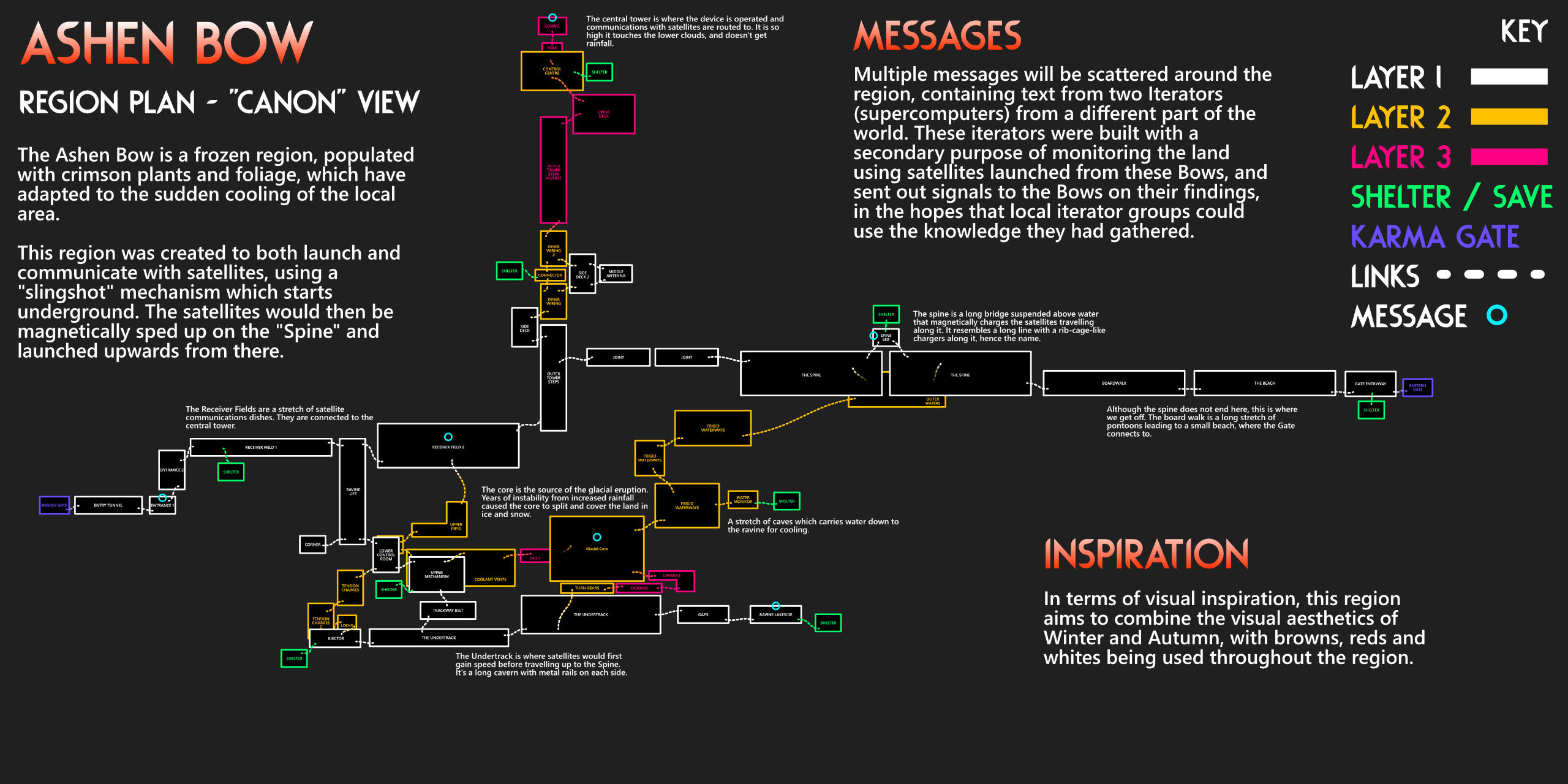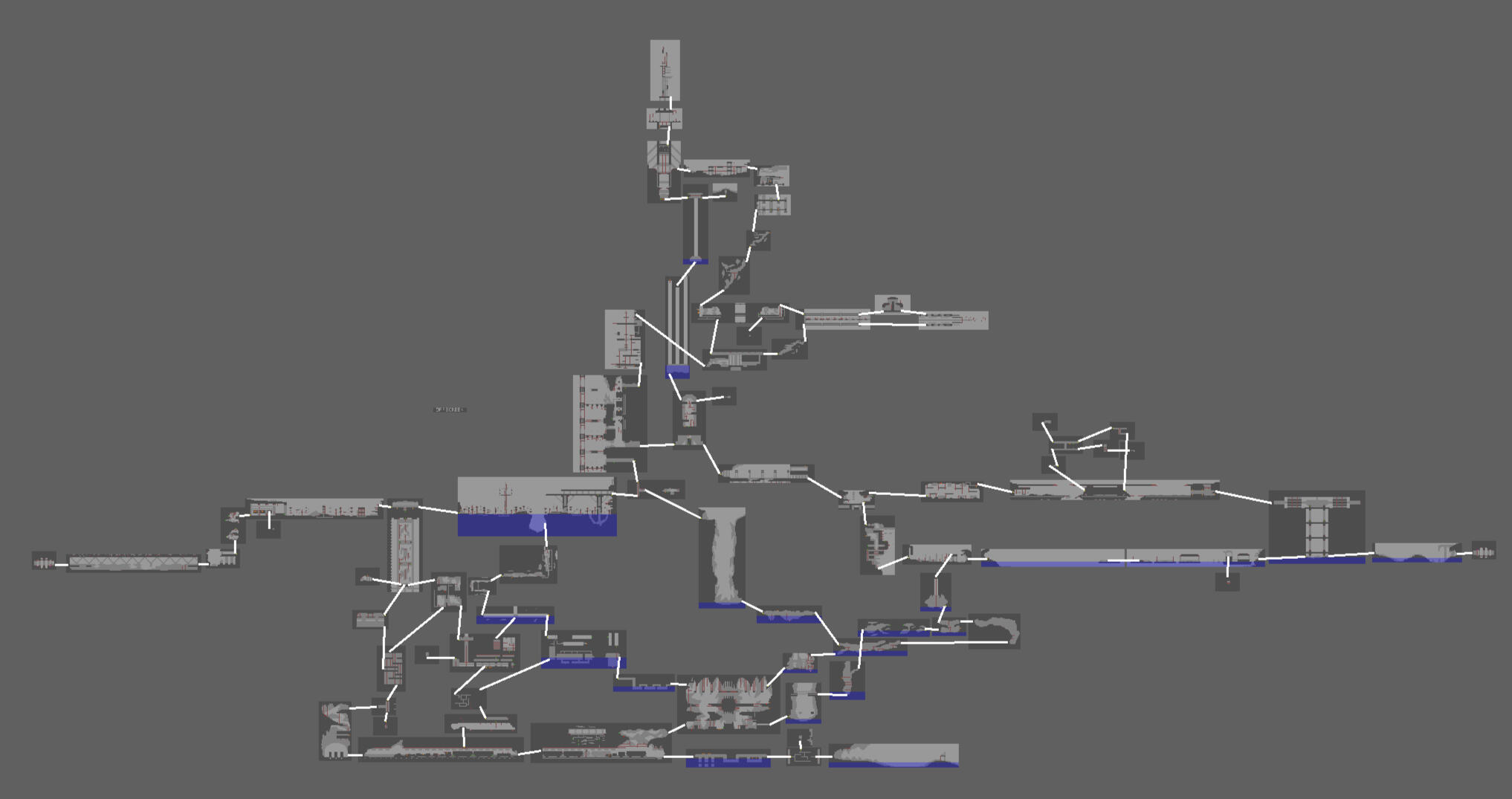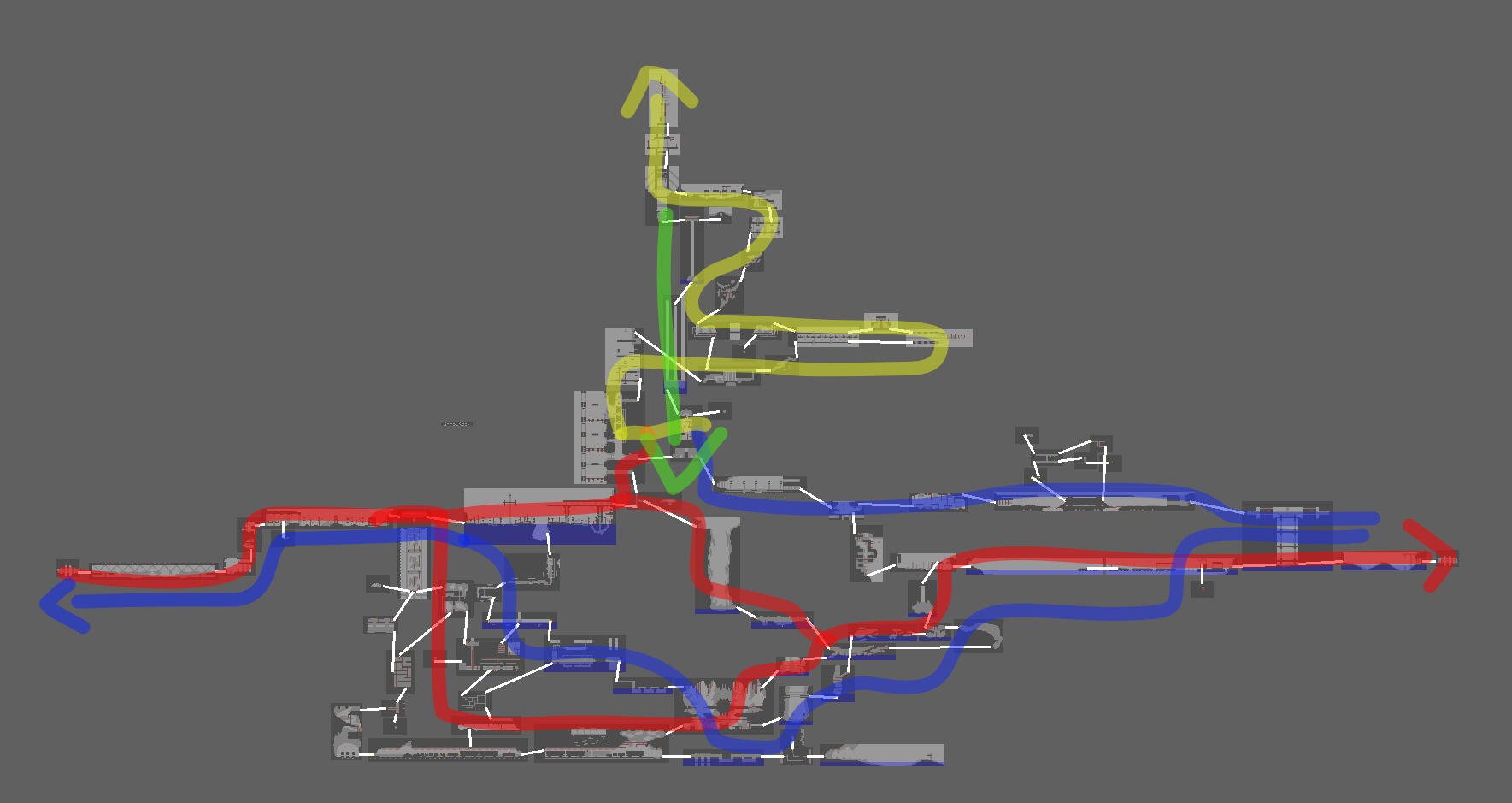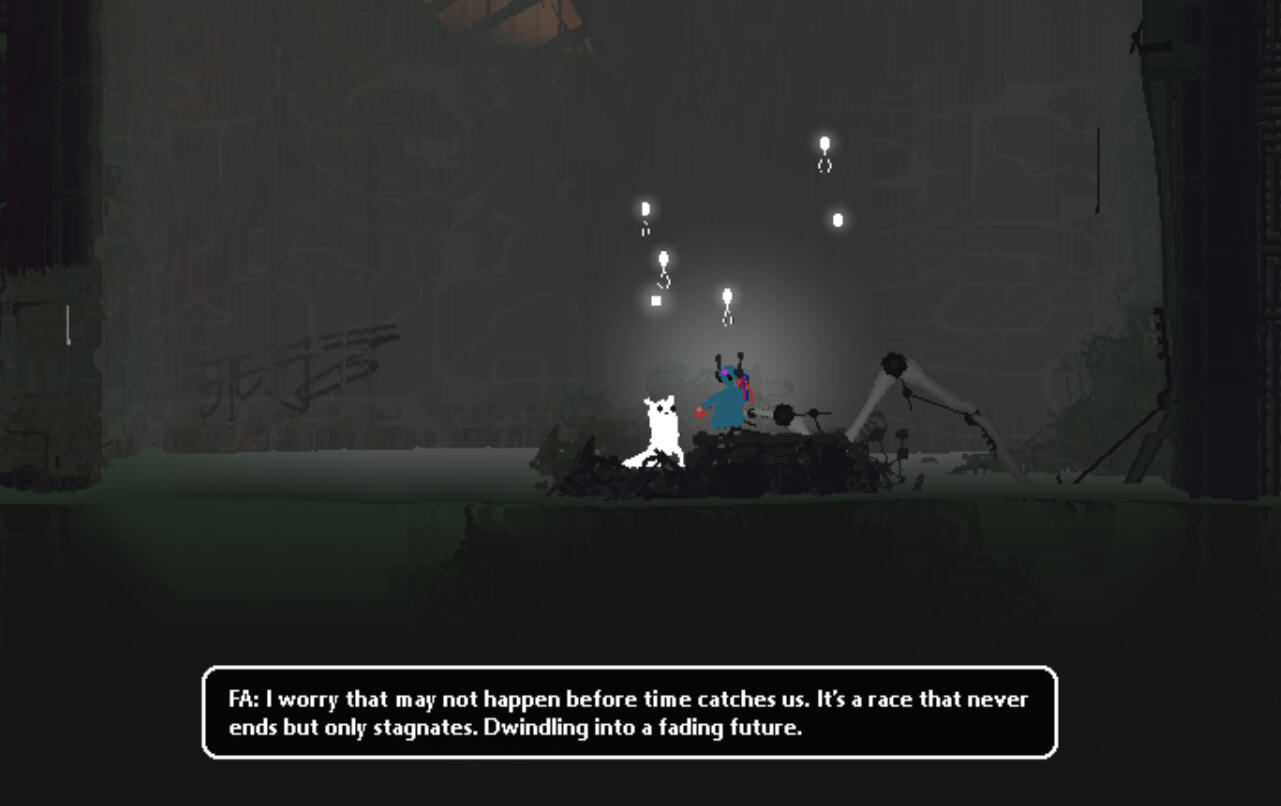ASHEN BOW
A level design / planning project for the game Rain World. This mod adds a new region into the game, and serves as the focus point of my Honours Project.
A region in permafrost
The "Ashen bow" is a snowy region covered in red flora which has adapted to the colder climate. While not cold enough to be a threat to your personal survival, the region still contains many dangers, such as the ever present creatures and rainfall cycles. Navigate the glacial satellite base and find new collectable pearls within the depths and heights of the region.This region features custom pearls (collectables), music, and some new assets.
Why this Project?
This project was created to challenge myself on a lot of different fronts. Beyond just improving my level and game design, I wanted to examine just how well I could adapt to a new set of tools. I wanted this project to feel unique amongst the other regions already in the game and as mods, and I felt that snow and a winter theme was underutilised beyond one specific campaign.I see Rain World as a challenge to design levels around, due to the nature of it's gameplay. Many creatures in the game can act unpredictably, and also need to navigate the world and reach certain areas just like the player. This means you are not only designing levels for the player, but for the game's AI to navigate.Aside from that, this project serves as the focus of my honours, which explores the relationships between designers and their communities, and how each can influence the other during the development of new content. It was very much a project designed for an already existing fan-base, so hitting the right notes for a group of players with expectations already set was an exciting oppurtunity and a real test for myself in understanding people who have been a part of the community far longer than I have.In a way, it brought an appreciation for the importance of loving the game you work on. Being immersed and invested in it as a fan and as a developer can help inform design decisions that will please players and get them talking.
Insights on Map Design
When designing this large-scale project, a proper plan had to be put in place.This plan was made before each individual room's appearance was fully fleshed out and developed, and before any concrete level geometry was put together. Below is a image of the first map plan created for the region...

...and here is the final, full version of the map.

The map was designed in a way that encourages players to explore different routes, but still guides them towards certain paths. There are multiple areas that only allow passage through one direction, as to allow challenging areas to have peaceful / rewarding sections as a reward for clearing them, while still being connected to the entire region.The general exploration flow of the map is designed like this:

The red arrows indicate the general route a player coming from the west would travel through, while the blue is the route an eastern arriving player may take. The yellow route is an optional extra challenge for the player that lets them access extra lore and a special "Echo" event. These were put out of the way of direct traversal routes to encourage exploration. The green line is a one-way drop back down for those that reach the top of the "Spire" quarter of the map, letting players quickly get back to ground level.
A design goal from the beginning was to have players know which section of the map they were in just by a glance, both through level geometry and stylistic choices. Featured below are the different quarters of the map and their design choices.
Receiver Fields
The western sections of the map are known as the "Receiver Fields". It is a relatively flat area populated with large communication dishes and aerials. It is the easiest section to cross due to its flatter sections and low amount of enemy creature activity. It serves as a peaceful introduction or exit to the region.Images of the in-development level files are shown after the image of the room for comparison. This is where the base geometry, tiling, props, effects, lighting, and camera placements are all defined.
Undertracks
"Undertracks" is the dark, insect-infested sector in the southern part of the region. It serves as a major connecting part of the map and as a potential future route for access to another region. It is more urbanised compared to other sections, with its graffiti, cavern walls, darker colours, and railway motifs immediately informing players of their location.
The Spine
"The Spine" is the eastern bridge section of the region. It has a darker environment and is designed to blend into a base game region, known as Shaded Citadel. The architecture of Shaded Citadel was replicated for sections of this area to better communicate the transition between regions, and an extension to Shaded Citadel was built which bleeds in Ashen Bow's design language and aesthetic.
Starlit Spire
"Starlit Spire" is a mostly optional area, and players can entirely avoid it if they wish for a quicker route through the region.This area is identifiable by its heights and mostly mechanical pieces, as it essentially functions as a radio control tower for the launch site. It is also home to a special event known as an "echo", and has a night-time variant due to it being above the heavy rainfall that would normally close each cycle.Players are rewarded with these unique events by making the trek upwards, but are not forced into pursuing the challenge if they are simply passing through the area.
Integrating Narrative
This was by far the hardest part of this project to get right. Rain World's writing follows certain conventions and tones depending on where the player looks. I go into extra detail in my record of development, but overall, I seemed to manage to get the lore content contained within the Echo event and collectable pearls pretty close to the way they are written within the base game. Some of the events can be seen in the 5 minute demonstration video linked at the end of this page.Beyond the writing however, I made sure that the level design of the region itself made sense within the context of what it's function is as a part of the world. Every area has a purpose - which can be seen within the different quadrants of the map, and each collectable piece of lore has dialogue connected to it related to where it would be found.

Showcase
For further reading on the creation of this project, the full record of development is available here: